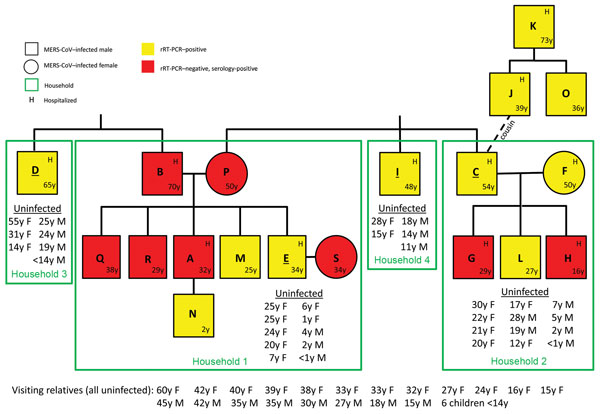MERS-CoV Transmission in an Extended Family, Saudi Arabia, 2014
May 20th, 2016CDC- Emerging Infectious Diseases
Abstract
“Risk factors for human-to-human transmission of…MERS-CoV are largely unknown. After MERS-CoV infections occurred in an extended family in Saudi Arabia in 2014, relatives were tested by using….rRT-PCR and serologic methods. Among 79 relatives, 19 (24%) were MERS-CoV positive; 11 were hospitalized, and 2 died. Eleven (58%) tested positive by rRT-PCR; 8 (42%) tested negative by rRT-PCR but positive by serology. Compared with MERS-CoV–negative adult relatives,
- MERS-CoV–positive adult relatives were older and more likely to be male and to have chronic medical conditions.
- Risk factors for household transmission included sleeping in an index patient’s room and touching respiratory secretions from an index patient.
- Casual contact and simple proximity were not associated with transmission.
- Serology was more sensitive than standard rRT-PCR for identifying infected relatives, highlighting the value of including serology in future investigations.”



